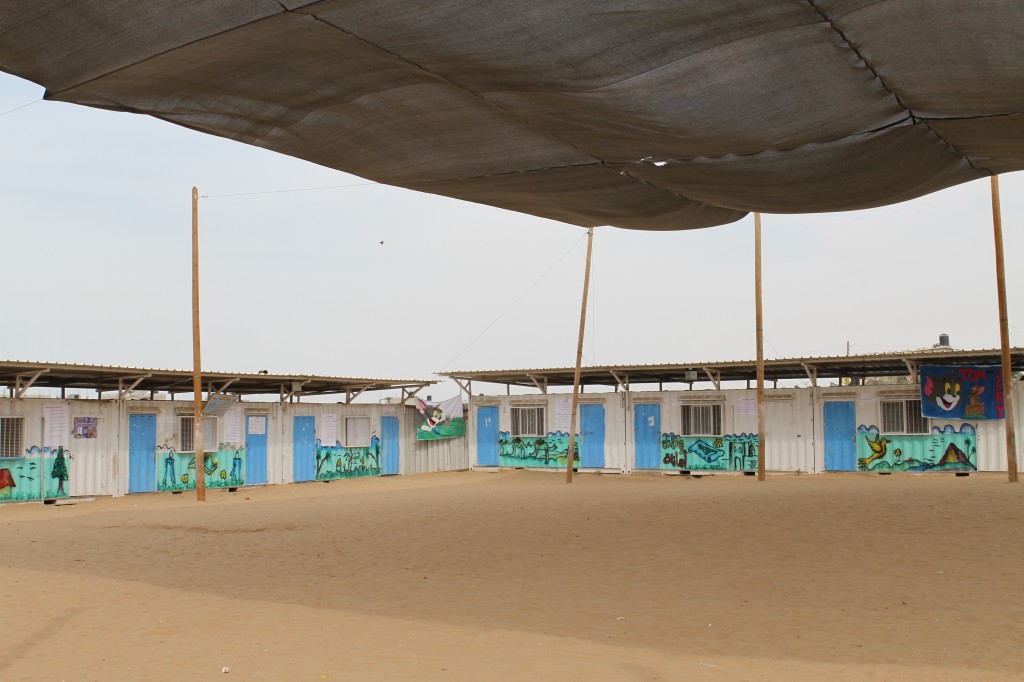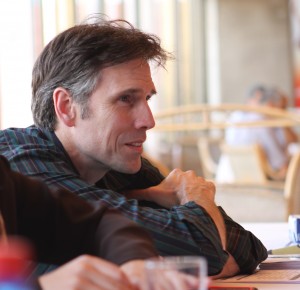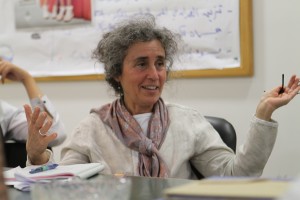Health care in Gaza under siege
By Gerri Haynes
(Gerri Haynes, a former president of Washington Physicians for Social Responsibility, is sending back reports from inside blockaded Gaza. As she did three times before, Gerri organized a team of doctors and other health care providers to work in hospitals and clinics in Gaza in an effort to directly help the people there and to bring attention to the ongoing humanitarian crisis that the Israeli blockade has created. Fourth in the series.)
While medicines and medical equipment are not technically prohibited for importation to Gaza, the reality here is that medicines and equipment are difficult to obtain:
1. There is only one crossing between Israel and Gaza that allows passage of goods and this crossing is open for a limited number of hours/day.
2. Transport of materials is onerous – goods brought to the crossing must pass through a secure set of doors, one door closing before another opens, with all doors to Israel fully secured before Palestinians can open doors on the Gaza side. UN personnel refer to this as materials passing through “sterilized zones” – high security clearance is required for each person who touches the goods and only UN personnel may make contact with the goods.
3. No goods are transported between Israel and Gaza on trucks. Materials are off-loaded from Israel and then must be palletized prior to entering Gaza to be re-loaded on trucks. The result is a minimal amount of material can be received – the delivery time is short and the process is long.
4. Requests for materials must be cleared by Israel and this can take weeks/months
5. The economy of Gaza is markedly depressed. UNRWA announced today that the unemployment rate is 45%. Funds to purchase materials are extremely limited.
Bob Haynes, cardiologist, is consulting and providing direct care for cardiology patients in several clinics. He is doing most of his work in the evenings and is seeing patients of all ages, including one 10-month-old child! The expertise of cardiologists in Gaza is high, but association with international colleagues is rare and one physician commented to Bob today, “It’s just nice to know that we haven’t been forgotten.”
Maxine Fookson, pediatric nurse practitioner, writes:“Since this is my first trip to Gaza, I find my eyes and heart wide open. I could use many more days or weeks here to see all that I want to see. I am shocked at the abject poverty and suffering from the siege on all of Gaza’s borders (air, land and water). And yet, I am so totally impressed with the talent, ingenuity, warmth, humor and total determination of the Gaza people. At an amazing technology fair we visited today showcasing students’ projects and designs at the Islamic University, as we were in awe at an optical invention that a student invented to correct childhood amblyopia (poor vision), the Dean of Nursing exclaimed, ‘See, that’s Gaza under siege!’ He is so right! What would Gaza be if it were free?
“I have visited a few health care sites providing maternal child health care. The first was a hospital and clinic called Al Awdah, which is funded by NGOs. The first impression is that the actual environment, including their instruments, looks to be about 30-40 years behind that which we have in the U.S. However, the environment was spotless. The pediatrician who showed me around explained that due to the difficulties in global economics, their funds are greatly reduced. As a result their intensive care units are closed completely. They have had to cut staff by about 30% and their pharmacy is almost bare of many essential drugs.
“I also visited the UNRWA Clinic in Nuserat, in the Central Gaza Strip. I was greeted with such warmth and hospitality. Again, I heard about the incredible manpower shortage. Nurses working in pairs see 60 to 70 well child visits in a day. The doctors average over 120 patients per day. Despite the shortages, they have a specialized clinic for children having school difficulties consisting of a pediatrician, a mental health provider and a nurse. It has been so rewarding to talk to these medical practitioners as colleagues. I am so totally impressed with the quality of the care they deliver under such incredible stress and conditions of scarcity.
“Other highlights for us have included visiting the fabulous programs of Qattan Centre and an UNRWA school located in converted shipping containers. It is estimated that UNRWA needs to build 100 schools to provide education for all the refugee children at this time, but they have funds to complete only 7 of the schools. Again, the structure of the school was so depressing, but the passion and dedication of the principal and teachers is amazing.”
The UNRWA container school is a facility of 15 boxes without air conditioning. We met representatives of a dedicated parent committee and were impressed with the passion of faculty and parents in assuring that the high priority on Palestinian education is respected. Set in a bare sandy lot, this facility will be replaced by a new school as soon as Israeli authorities allow the necessary building materials to enter Gaza.
1 Comment to “Health care in Gaza under siege”
RSS feed for comments on this post. TrackBack URI



By January, November 4, 2011 @ 3:39 am
Enlgithnenig the world, one helpful article at a time.